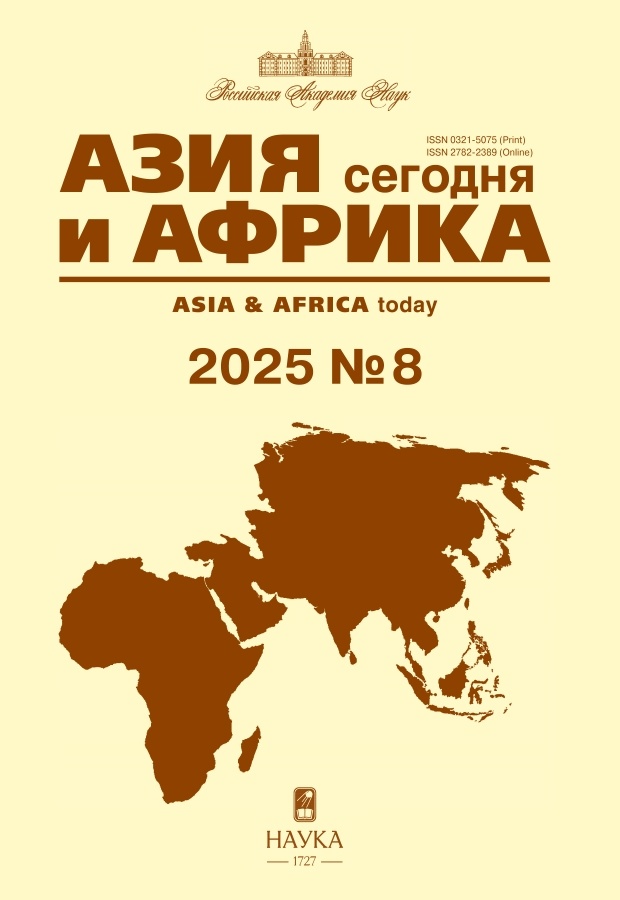Биоэтические проблемы демографической политики Китая: предпосылки и современность
- Авторы: Мусалитина Е.А.1, Бобышев С.В.2
-
Учреждения:
- Komsomolsk-na-Amure State University
- Дальневосточный государственный университет путей сообщения
- Выпуск: № 1 (2023)
- Страницы: 25-33
- Раздел: Политика, экономика
- URL: https://jdigitaldiagnostics.com/0321-5075/article/view/647262
- DOI: https://doi.org/10.31857/S032150750024040-6
- ID: 647262
Цитировать
Полный текст
Аннотация
Статья посвящена исследованию биоэтических проблем демографической политики Китая. Одним из главных инструментов контроля рождаемости в стране на протяжении 30 лет было искусственное прерывание беременности – аборт. В силу этого возникает противоречие между политическим курсом государства и традиционными, укоренившимися в обществе моральными принципами и ценностями. Демографическая политика стала жестким методом ограничения репродуктивных прав и свободы частной жизни китайского населения. Сложившаяся ситуация обусловливает актуальность исследования демографической политики Китая с точки зрения биоэтики.Рассматриваются предпосылки утверждения политики «Одна семья – один ребенок»; последствия этой политики, такие как биоэтические проблемы прерывания беременности и селективных абортов в Китае; трансформация традиционного института семьи; морально-этический статус второго ребенка; проблема запрета суррогатного материнства; гендерный дисбаланс; всплеск нелегальных услуг в сфере медико-репродуктивных технологий.
Полный текст
Об авторах
Евгения Александровна Мусалитина
Komsomolsk-na-Amure State University
Email: asaf-today@mail.ru
ORCID iD: 0000-0001-9635-0803
доцент кафедры лингвистики и межкультурной коммуникации
Россия, Комсомольск-на-АмуреСергей Васильевич Бобышев
Дальневосточный государственный университет путей сообщения
Автор, ответственный за переписку.
Email: asaf-today@mail.ru
ORCID iD: 0000-0003-3906-4012
Заведующий кафедрой теории и истории государства и права, Дальневосточный государственный университет путей сообщения
Россия, ХабаровскСписок литературы
- Ахметова А.В. Проблемы системы здравоохранения коренных малочисленных народов Дальнего Востока в послевоенный период (1945 – начало 1950-х гг.). Коренные народы современной России: этноязыковые, правовые, социокультурные и духовные проблемы. Материалы Всероссийской научно-практической конференции, посвященной объявленному ООН в 2019 г. Международному году языков коренных народов. 2019, с. 43–49.
- Волошин А.И. Селективные аборты как форма нарушения репродуктивных прав женщин. Ученые записки Крымского федерального университета имени В.И.Вернадского. Юридические науки. 2020. Т. 6 (72). № 2, с. 119–127.
- Климова Е.В. Этапы развития мира детства в культуре коренных малочисленных народов Дальнего Востока России. Коренные народы современной России: этноязыковые, правовые, социокультурные и духовные проблемы. 2019, с. 162–165.
- Кубарь О.И. Социальное значение этических проблем современных генетических исследований в медицине и биологии. Биоэтика. 2021, № 1(27), с. 5–12. doi: 10.19163/2070-1586-2021-1(27)-5-12.
- Ставров И.В. Социальное развитие национальных районов Северо-Восточного Китая (1978–2002 гг.). Россия и АТР. 2007, № 3, с. 91–95.
- Chen Ch. Population aging as a factor in China’s industrial structure. Science and business: ways of development. 2022. № 3(129), pp. 218–222. (In Russ.)
- Akhmetova A.V., Ivashchenko Y.S. The problems of legal regulation of the development of Far Eastern native minorities during the Soviet state national policy formation period (1920s–1930s). Advances in Intelligent Systems and Computing. Switzerland. 2018. № 622, pp. 305–314. doi: 10.1007/978-3-319-75383-6_39
- Bobyshev S.V. The influence of school on the transformation of the family institution of indigenous peoples of the Far East in the 1920s–1930s. Smart Innovation, Systems and Technologies. Switzerland. 2020, pp. 92–99. doi: 10.1007/978-3-030-15577-3_9
- Franklin S. Ethical research – the long and bumpy road from shirked to shared. Nature. 2019. V. 574. № 7780, pp. 627–630. doi: 10.1038/d41586-019-03270
- Petrunina Z.V. Educational Policy of China: strategic plans and implementation mechanisms in the twenty-first century. Proceeding of the International Science and Technology Conference “FarEastCon 2020”. 2021, pp. 869–878. DOI: 10.1007/978-981-16-0953-4_84
- Wu Zh. Illegal births and legal abortions – the case of China. Reproductive health, 2019. (In Chin.). https://pubmed. ncbi.nlm.nih.gov/16095526/ (accessed 13.06.2021)
- Yuan Т. Demography in China: from zero to now. Population index. Population Index 1981. (In Chin.). https://jstor. org/stable/2736034. doi: 10.2307/2736034
- Zhu W. China’s excess males, sex selective abortion, and one child policy: analysis of data from 2005 national intercensus survey. BMJ Editorial Scholar. 2009. (In Chin.). https://www.bmj.com/content/bmj/338/bmj.b1211.full.pdf. doi: 10.1136/bmj.b1211
- Cui C., Peng Sh., Li C., Zhang Ch., Wang Zh., Zhang X., Clan culture, One-Child Policy and Child Trafficking of illegal adoptions in China. SSRN Electronic Journal. 2019, pp. 1–17. (In Chin.)
Дополнительные файлы











